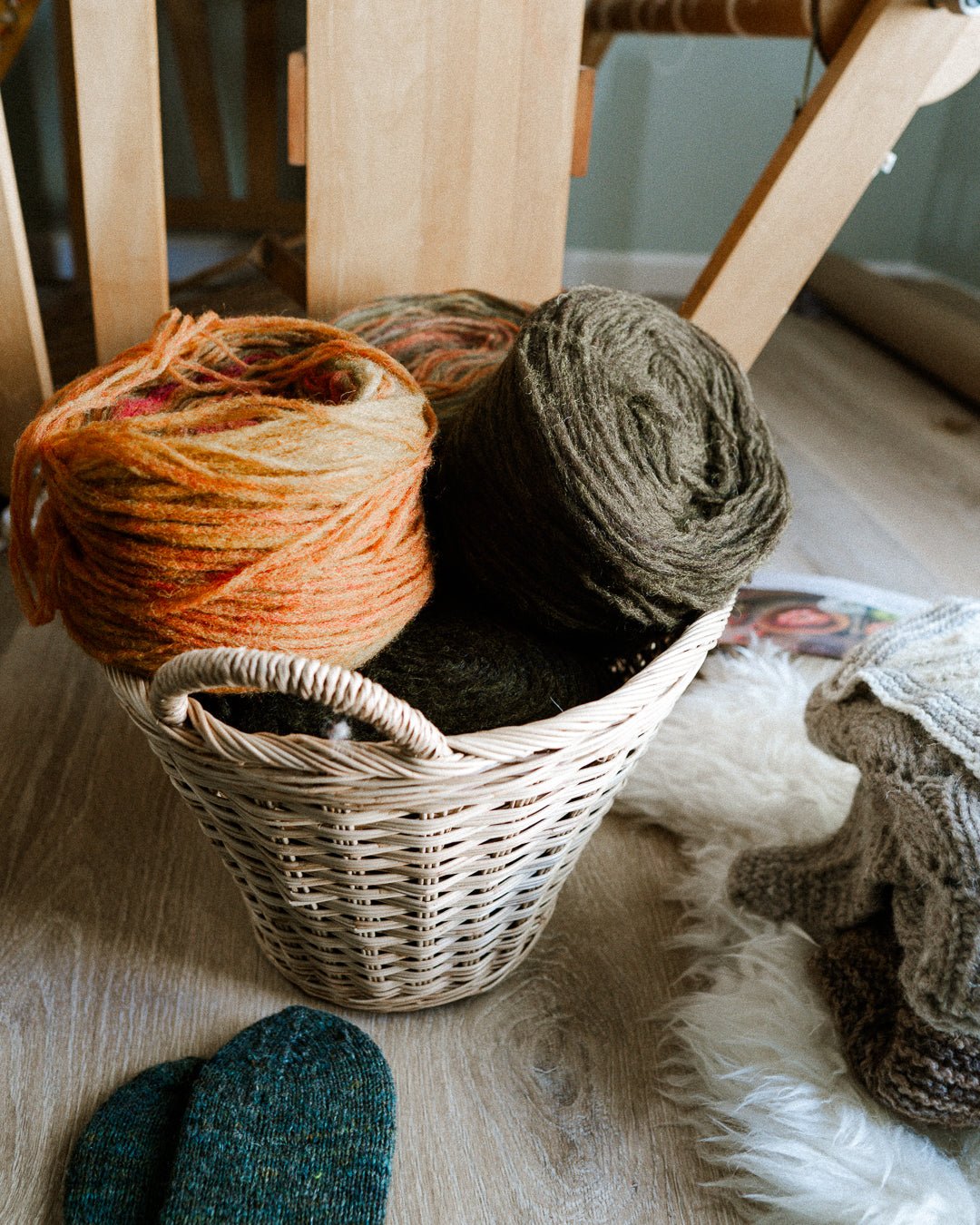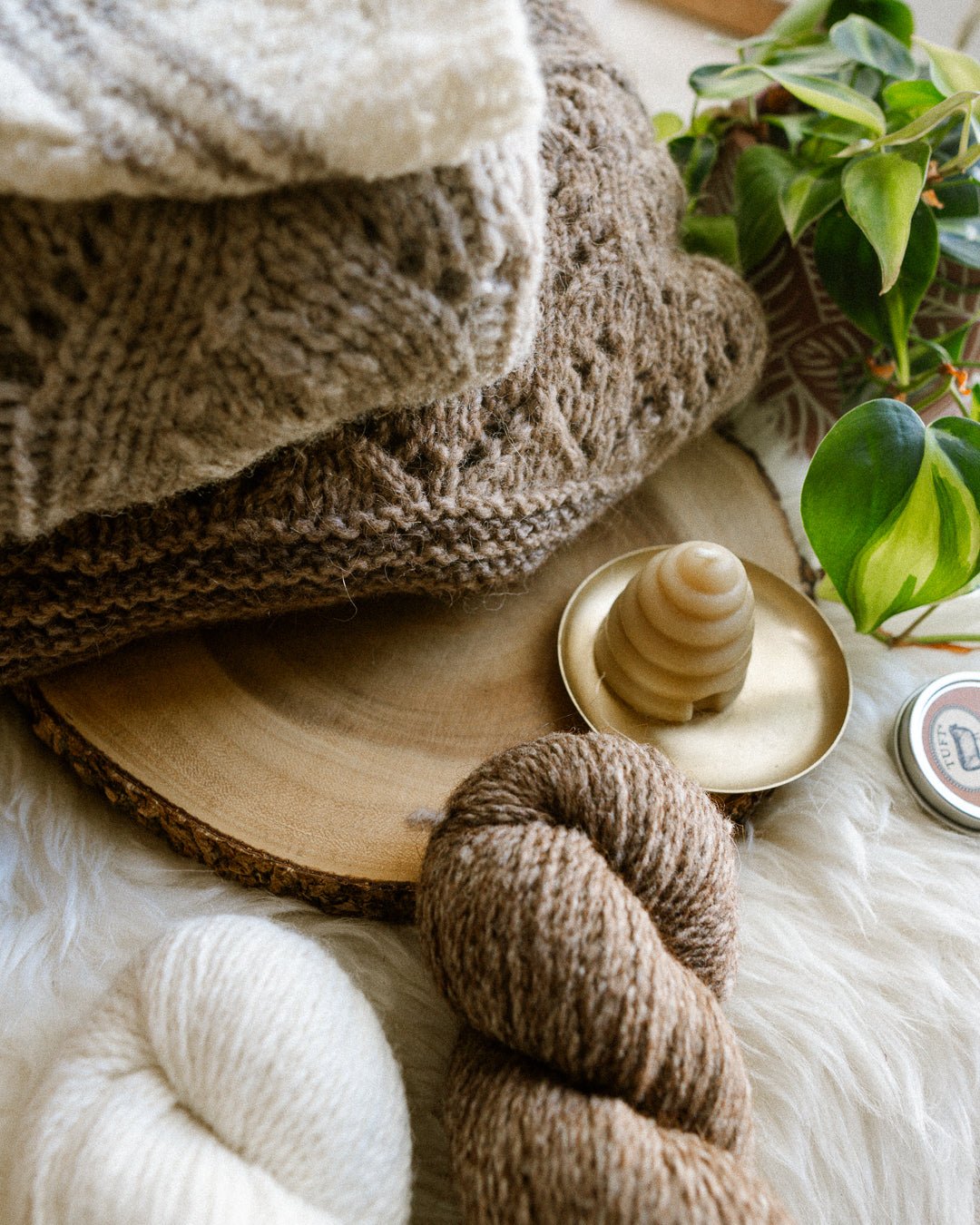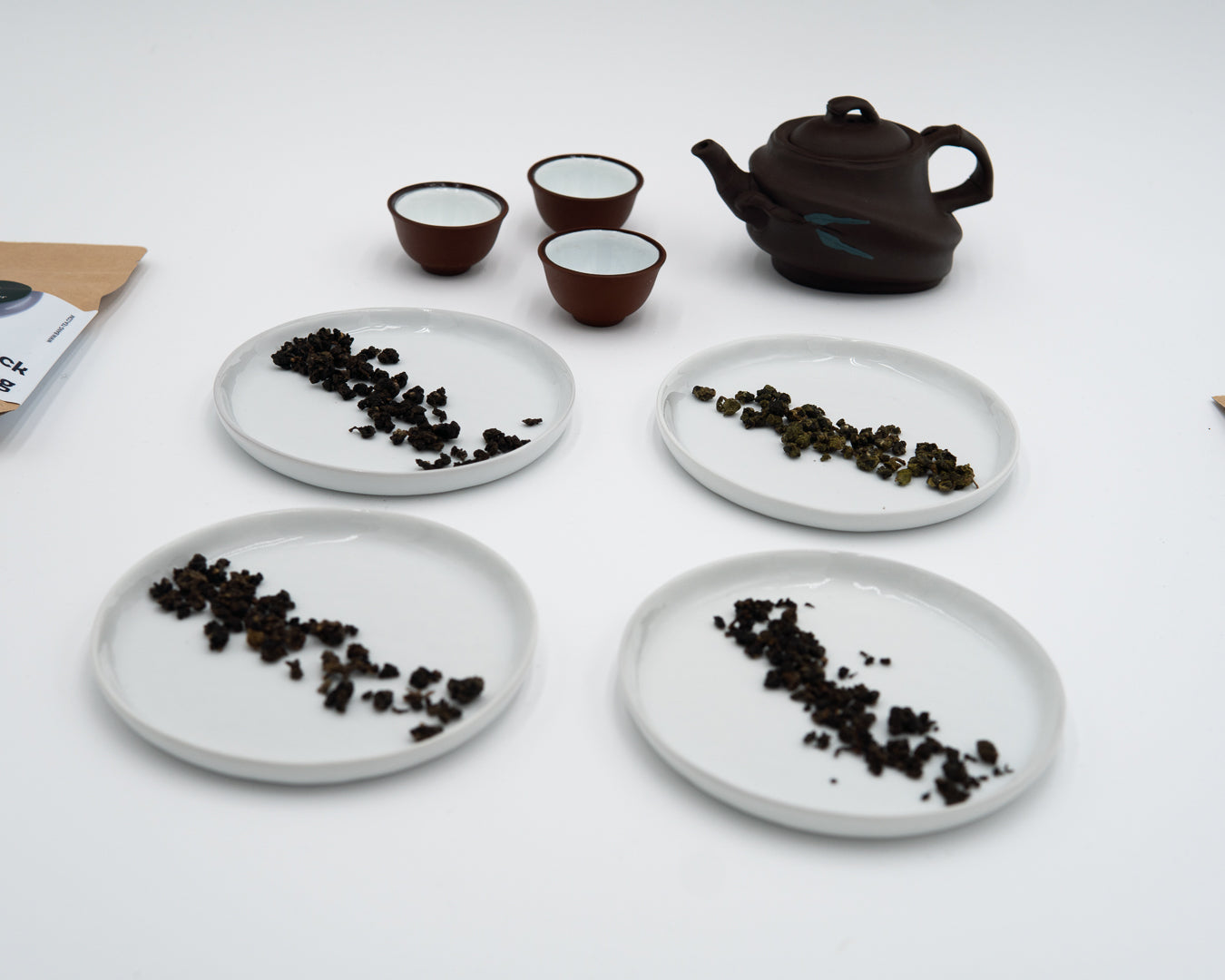
How to work with unspun yarn or woolen spun yarn.
Woolen spun yarns have always been around, and their distant cousin, unspun yarn, rapidly gaining in popularity. New products in the unspun category come onto the market all the time. It's a really exciting time for fiber artists who love these types of yarns. I have used both of these styles of yarns many times in my own designs.
With so many new products coming onto the market, you may be wondering what they are. You may have even heard that they are delicate and prone to breaking. They have advantages too. Woolen and unspun yarns have less ‘organized’ fiber that go in all directions within the strand, and are loftier and airier as a result.
If it's your first experience with unspun yarn, fear not, I've got your back! This blog post will help you figure out the best ways to use these yarns. These do have a bit of learning curve, so you might need the tips in this blog to increase the ease of the knitting experience.
Consider this your ultimate beginners guide to working with unspun yarn.
How do you make unspun yarn?
To make unspun yarn, mills first card the wool in enormous carding drums. Then, the fiber drafts through their machines without being twisted to create twisted yarn. That's it!

Photo of the unspun yarn shaped into "plates", courtesy of Wooldreamers.
Brands typically present unspun yarn in huge cylinders called "plates." Some unspun yarns, like Manchelopi by Wooldreamers, are already double stranded, but I still prefer to ball them up. Other unspun yarns come in single strands, such as Plotulopi or Höner och Eir's Nutiden.
What is woolen spun yarn?
Mills spin yarn that's been carded, without combing it, to create woolen spun. Woolen spun features twist, which is what differentiates it from unspun yarn. The fibers in woolen spun yarn lay chaotically, and not in parallel alignment due to the lack of combing. Thus, they create a fluffy look in the finished products and is a wonderful choice for all kinds of projects.
What differentiates all of these unspun yarns is often the fiber content.
For example, Plotulopi contains 100% Icelandic wool, which is single origin from a very old breed of sheep. It features very long staple lengths. If durability of the yarn is important to you, I think you'll like Plotulopi. But on the other hand, it does feel more scratchy than other types of unspun wool fibers. Wooldreamers' Manchelopis unspun yarn contains 100% manchega wool, which is the same sheep that makes the cheese!
Other unspun yarns, such as Höner och Eir's Nutiden, feature a variety of other yarns, often blended in different ways for unique blends to each collection.

Why choose unspun or woolen spun?
I truly love unspun yarn, because they insulate well and create very warm, very light garments. They have moderate (woolen) to very little (unspun) twist holding them together once the fabric is knit, which means that they hold a ton of air and create a lot of warmth.
Worked up, unspun yarns make wonderful winter knits, and creates a very fluffy texture of the knitted fabric. The finished fabric is reminiscent of raw wool, and can be very rustic. The first time I wore my unspun yarn garments and mittens during the colder months, they amazed me by keeping me super warm.
Garments made of unspun yarns (and sometimes woolen yarns) are even a little bit waterproof. The high lanolin content that some of the brands have (excepting Plotulopi, which I find more dry to the hand) is what makes it resist water. I think it's super fun to watch rain droplets pool up on my garments outside in the colder months!
Both unspun and woolen spun yarns, when knit up, shows a unique texture and blooms wonderfully upon wash.
Over time, they become slightly felted which creates a very even, beautiful fabric, in my personal experience. This happens more strongly with unspun yarns than with woolen spun ones.
They're also excellent for oversized garments, such as drop shoulder pullovers or dresses, because they will total to less weight over the course of the garment and drag down on the oversized garment less.
What gauge can we knit unspun yarn at?
Unspun yarns knit up extremely flexibly when it comes to the gauge. You can knit them up in projects, held single, for fingering weight. Or, hold them double for worsted-to-chunky weight. Sometimes I see super bulky projects using them held triple, whew!
You can also hold a single strand with a stronger yarn, such as a strand of mohair. That usually comes out to about DK weight.
If you hold unspun yarn with a strand of another fiber, such as mohair silk, you'll have with an easier time, in my personal experience.
Sources for unspun yarn and unspun yarn patterns in the United States
For a long time, Plotulopi was the only type of unspun yarn, or pencil roving, available on the market. The good news is, there's lots of them on the market now, some in the United States.
- You can purchase Manchelopi right here, in our shop.
- Plotulopi at our affiliate Woolly Thistle
- Nutiden is available at Höner och Eir only. They ship worldwide from Europe.
For unspun yarn patterns, you can always shop at our website!
We have 7 knitting patterns (as of the writing of this article) using unspun yarn in a variety of simple stitch patterns to more textured ones.
They span a variety of needle sizes, from US 8 / 5 mm needles to as high as US 10 / 6 mm needles.
How to prep your unspun and woolen yarn for use
Unspun yarn always comes in a format called plates, while woolen yarn can come anywhere from skein to ball to cake form. With woolen spun yarn, all you have to do is take extra care not to yank at it too hard when you are winding the yarn.
For unspun yarn, which is quite a unique wool, things might be a little different. The first step: I always ball up my unspun yarn in the number of strands that I intend to knit with. Woolen spun yarns tolerate being wound into center-draw cakes or balls. Either will work.
For unspun yarns, I most often wind them up into double strand, but some yarns already come double, such as Wooldreamers' Manchelopi.
If you ball up your yarn in single strand, double strand, or even additional strands for whatever format you intend to work it in, when you pull on the yarn, it'll reduce the wear on the pull point and reduce breakage. This is because when there's too much force pulling on the ball of yarn, it'll roll inside your container rather than have a hard stop point in the working yarn coming from the plate.
When you are winding them up, remember to draw from the outside of the plate so that you do not collapse and tangle the plate.
Select finishes to match your yarn.
When matching yarn to pattern for unspun and woolen spun yarns, consider what finishes are desired. The challenges of working with these yarns means that some special techniques are needed to complete some finishing elements.
When joining new yarn, I recommend using the spit felt join. I think that these yarns are the perfect candidate for this invisible join.
Bonus: you have hardly any ends to weave in with this method.
When sewing with this yarn, either to work an alternative bind-off (such as in pattern or in knit rather than tubular).
To weave in ends, twist the end of the yarn while it’s on the tapestry needle before sewing.
The twisting action adds twist and ‘spins’ the yarn, adding strength for the seaming or-bind off. In my patterns, if I require something like a sewn bind off or any seaming,I write them with bottom up construction. This results in smaller areas so that would require sewn bind off, such as the neckline or the cuff.
Typically, I write instructions for weaving in ends after wet blocking. Due to the fragile nature of these yarns, I always recommend that they are woven in before wet blocking in all my patterns using this type of yarn. And remember, you should always hand wash your unspun yarn projects. Warm water helps accelerate the bloom and the way the fibers meld together for a more cohesive pattern. However, watch out for dye bleeding!
If the yarn breaks at any point, spit felt the ends together with a little water and continue, same as when you're joining new yarn. That's it!
See unspun yarn in action
For a full run down of how I work with these yarns, you can check out the YouTube video:
More about knitting for different weather
Here's some more blogs from myself and some other makers all about knitting for various weather conditions.




1 comment
Hi, Aimee,
I viewed your tutorial on YouTube about knitting with un-spun wool. I bought three plates while in Iceland and am interested in finding a good beginner pattern. Would you suggest something?
Thanks,
Pam
Pam Woodson
Leave a comment
This site is protected by hCaptcha and the hCaptcha Privacy Policy and Terms of Service apply.